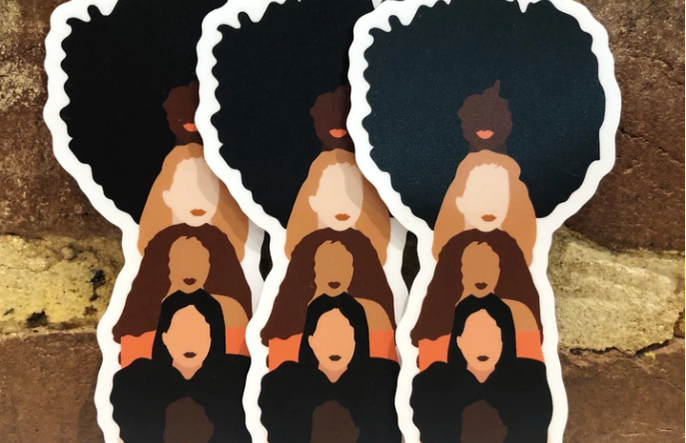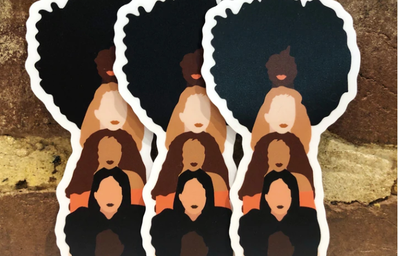The oppression of women in society transverses race, class, and culture, and the Black Panther Party was not an exception to how perceived gender norms systematically subjugated women. Inspired by Malcolm X and his notion of fighting for freedom by any means necessary, Huey Newton and Bobby Seale founded the Black Panther Party on October 15, 1966, in West Oakland, California (Haskins). The Black Panther Party for Self-Defense constituted the goal of protecting Black neighborhoods from police brutality and advocating for African-American civil rights, equality in education, housing, and employment. The Women of the Black Panther Party helped strengthen the structure of the Party, and their support was essential for its growth and outreach into the community. Several women emerged as leaders and held critical strategic positions for the Party’s success, though the men mostly dominated leadership roles.
Elaine Brown led the Black Panther Party as the first female chairman, but she encountered much difficulty and sexism, which forced her to resign. Newton appointed Brown as chairman when he left for exile. As the Black Panther Party leader, Brown drastically changed the image of the Party from violent and militaristic toward politics and education (Valente). Brown was primarily involved in the Oakland Community Center. Through her leadership and those of other women, the program received a commendation from California State for setting the standard for the highest level of education in the state (Haskins). Still, many men disapproved of Brown’s leadership because she was a woman. When Huey Newton returned from exile in Cuba, the men stopped taking orders from Elaine and would only listen to Newton. The assault of a female Panther who was beaten because she exercised her leadership over a male Panther was the final straw, leading Brown to resign as chairman. The woman who was assaulted was Regina Jennings (Haskins).
Regina Jennings was a young female soldier in the Black Panther Party. A common notion held by many male members of the Party was that they had every right to have sexual relations with female members of the Party and the women had no reason to refuse them. Female Panthers who did not accept the sexual advances were thought to be against the revolution and the men of the Party. When her captain sexually harassed her, Jennings refused his advances, but he humiliated and harassed her even more. The captain’s harassment led Regina to report her captain to the Central Committee. However, the all-male panel sided with her captain, and according to Jennings, “they believed that [her] attitude of sexual abstinence was both foolish and counter-revolutionary” (Jones 262-263).
The Black Panther Party was successful to some degree at promoting female leadership and resisting gender roles. The leadership positions held by Brown, Jennings, and other women are testaments to this. However, the emotional, physical, and sexual abuse they encountered are also testaments to the sexism that flourished in the Black Panther Party.
Sexism in the Black Panther Party reflected society and culture at that time, but this does not vindicate the Black Panther Party for harboring those gender biases. The Black Panther Party originated in the 1960s when women were seen primarily as caregivers and were not allowed the same opportunities as men. While all women faced prejudice and inequity in the United States, the oppression of White women varied from the oppression of black women. Black women faced twice as much injustice because they bore the double burden of being Black while being a woman in America. “All” women gained the right to vote through the passage of the 19th Amendment in 1920, but it was not until the Voting Rights Act of 1965 that black women freely exercised that right. The condition of black women was most unfortunate and unique to the experience of the Black man and the White woman; neither the Civil Rights Movement nor the Women’s Rights Movement could fully adhere to the needs of Black women separately.
Kathleen Cleaver was a member of the Black Panther Party and the first woman to sit on the organization’s Central Committee. In her perspective, “when women suffered hostility, abuse…this was not something arising from the policies or structure of the Black Panther Party…that was what was going on in the world…” (Cleaver). Kathleen argued that sexism and oppression of women were prevalent in society and not unique to the Black Panther Party. While this was true, Kathleen failed to address that racism and oppression of black men were ills of the society also, and yet the Black Panther Party did not reflect those ills; instead, they fought against racism and bigotry.
The Black Feminist Movement emerged due to the sexism and sexual harassment Black women faced in the Black Liberation Movement (Source 5). The Black Feminist Movement and the Women’s Liberation Movement began in the 60s and 70s and aimed to eradicate sexism in society. The existence of those movements showed that society’s culture was not all accepting of the subordination of women. Women and groups in the community fought against sexism, so Cleaver’s justification for sexism within the Black Panther Party is insubstantial because it failed to acknowledge the effort of several people in that time and their fight for women’s rights.
Contemporarily, we celebrate February as Black History Month and March as Women History Month. Both months consecutively and separately celebrate my identities. However, as a Black woman, it’s difficult to see my identity fully represented and celebrated during either month. Unfortunately, the intersectionality of my identity does not fully translate during either celebration. Over time, I’ve learned to stop waiting to feel celebrated and represented and do these things myself, hence this article!
- Source 1: Haskins, James. Power to the People: the Rise and Fall of the Black Panther Party. Simon & Schuster Books for Young Readers, 1997.
- Source 2: Valente, Jose. “Elaine Brown.” American Government, ABC-CLIO, 2018, americangovernment.abc-clio.com/Search/Display/195766. Accessed 16 May 2018.
- Source 3: Jones, Charles Edwin. The Black Panther Party (Reconsidered). Black Classic Press, 2005.
- Source 4: Cleaver, Kathleen, and George Katsiaficas. Liberation, Imagination and the Black Panther Party A New Look at the Black Panthers and Their Legacy. Taylor and Francis, 2014.
- Source 5: But Some of Us Are Brave: A History of Black Feminism in the United States.” The Thistle, vol. 9, no. 01, www.mit.edu/~thistle/v9/9.01/6blackf.html.
Can’t get enough of HC UMass Amherst? Be sure to follow us on Instagram, listen to us on Spotify, like us on Facebook, and read our latest Tweets!




